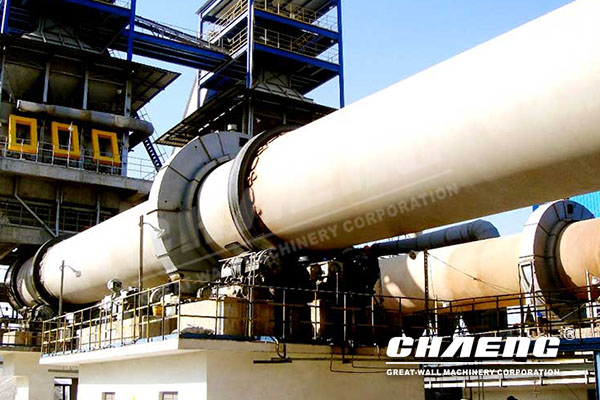Industry Reports
Why adjust the rotary kiln flame?
The rotary kiln is the core equipment for calcining cement, lime and other materials. Fire is required during the calcining process of the equipment. The intensity of the flame is directly related to the quality of the finished product. So how to adjust the rotary kiln flame in daily operation?
 2. Shape adjustment
2. Shape adjustment

Different flame shapes will also have different effects on material calcination. Xinxiang Great Wall Mechanical Mill Manufacturer recommends that you start from the following two points:
1. Length adjustment
Whether the equipment has reached its ideal working condition can be roughly judged based on the length of the rotary kiln flame. When the rotary kiln is calcining materials, the air coal must be properly matched. Only then can the flame be complete and smooth, and the phenomenon of rinsing the kiln skin will not occur. When there is a lot of coal and a small amount of wind, the flame will be red and the fire head will be black. The specific manifestations are that the flame is long and thick, soft and weak, the fire is slow, the combustion is incomplete, and in severe cases, coal particles are dropped, and even the pulverized coal is blown out of the coal nozzle. It just fell down and a blue flame appeared on the surface of the clinker. If the flame is long, weak, and constantly retracting, it means that the exhaust air is large; on the contrary, if the flame is short and concentrated, and the kiln is muddy in severe cases, and the cooling zone and the fire point are filled with white gas, it means that the exhaust air is small. The length of the rotary kiln burner flame is proportional to its power and pressure within a certain range. If you need to increase the flame, you can increase the gas pressure, and vice versa.
The flame shape of the rotary kiln is mainly adjusted through the reasonable matching of the internal air flow and the external air flow. At present, most domestic precalciner kilns use three-channel or four-channel burners. Therefore, the outflow wind speed should be appropriately increased, so that the firing zone can be controlled to be slightly longer to facilitate the firing of fine and uniform plastic particles. If the fuel quality is poor and the combustion speed is slow, the internal airflow can be appropriately increased and the external airflow can be increased; if the fuel quality is good or the kiln skin is too thin and the kiln body temperature is high and the flame needs to be lengthened, the external airflow should be increased. , to increase the internal flow. However, the outflow air volume and the inflow air volume must be kept appropriate. The task of watching the fire in the zinc oxide rotary kiln is very critical.
An ideal flame must ensure a high degree of heat exchange along the entire flame length, while not allowing local overheating. The rotary kiln requires a directional hard flame, that is, the flame in the kiln is hard and powerful when viewed from the kiln head. , the flame extends powerfully towards the end of the kiln, instead of being weak, floating or divergent in the kiln. Therefore, operators must pay attention during daily operations.



